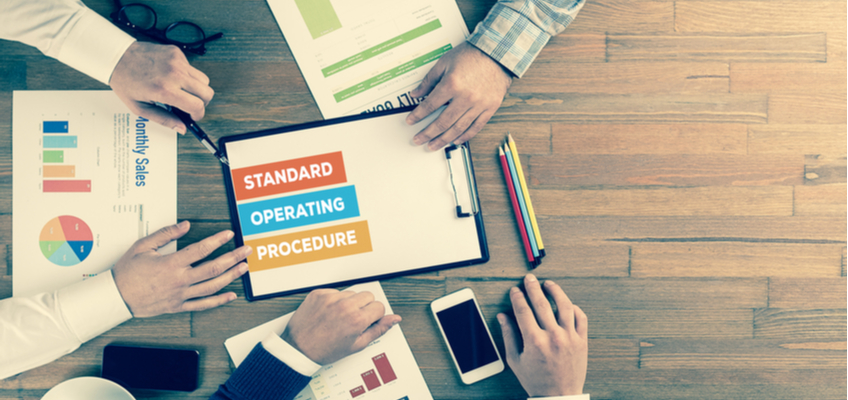
How to Launch a Product in 100 Days: Part 2
Editor’s Note: This is Part 2 of a guest post written by Zack Leonard, President and Founder at Gembah.
Now that you’ve designed your product, you’re ready to start the sourcing and manufacturing process!
Step 1: Find the Right Factory Partner
The next step in the Gembah product innovation process is to work together to locate the right factory partner for your project. It’s arguably the most critical step in the process. The right factory can be a great partner for the entirety of your product creation career, while the wrong factory can derail great ideas and make things a mess.
Factory Types
There are three types of factories you’ll encounter:
- Factories that handle raw materials
- Those that manufacture individual components from raw materials
- Assembly factories that put all the pieces together to create the final product
It takes in-depth due diligence to locate the right factory for your project. Leveraging online resources can help you do some of this work.
Doing the rest in-person is vital. There’s nothing like the gut check that comes from seeing a factory in action and getting a feeling about how they operate.
Questions to Ask
Here are some of the questions you will need to answer before a visit:
- With whom are they currently doing business?
- Are there clients similar to you with whom they are working?
- How many clients are they currently working with?
- Have they exported goods previously?
- Do they have all of the compliance documentation they need to satisfy local and federal regulations and requirements?
- What is their capacity? Is it small enough that in adding your project, they could become backlogged, creating delays?
Another element of pinpointing the right factory with whom to work is determining the price.
Additional Factors to Consider
Here are the factors to consider:
- What is the cost of each component that will be a part of the final product?
- Is there room to bargain? Where can you protect margins?
- How much will it cost to get a physical sample before the production run begins?
- How does this work with your production timeline?
- What are the factory’s payment terms?
- Does this fit your budget and cash flow needs?
- What is the factory’s payment schedule?
- Does this fit your budget and cash flow needs?
- If the factory makes mistakes, what are the ramifications?
- How are you protected if the factory doesn’t deliver on timelines and costs as promised?
Once you’ve signed on with a factory partner, the next thing is to get a sample of your product produced before you go into a full production run.
Step 2: Get Your Product Samples Developed
The sample development process can be the most time-consuming step in the pre-production process. Therefore, it’s vital to get all of your ducks in a row to make sure things move smoothly and as quickly as possible.


There are three types of samples you’ll see:
- Construction – This is where the factory works through the cost of making the final version of the product.
- Design – During this stage, the factory finalizes the core characteristics of the product.
- Production – We call this the “Golden Sample.” It is a final prototype of what the factory will work from to develop the production-ready version of your product.
Getting samples produced helps you actively control the process, evaluate cost considerations, monitor quality control, and shop around to make sure you’re getting the best deal possible for your project budget.
Going into a full production run without first evaluating samples is like flying blind without a co-pilot. While time-consuming, assessing each of the samples is the best way to ensure there aren’t any unnecessary surprises when production begins.
Step 3: Ensuring Production Compliance Standards
If you cannot meet all of the compliance standards necessary for production and shipping, all the work you’ve done up to now can be a moot point. Gembah helps you to do quality control and examine five categories of compliance standards to make sure this doesn’t happen.
Quality Control
Doing quality control of your products up-front ensures your reviews are what they should be. After all, product rankings on platforms like Amazon are dependent on the quality of your reviews.
Quality fade can be a big concern, as well. This fade occurs when the quality of a product degrades over time, even when the original version met specifications and quality expectations. With the right measures put in place, it’s avoidable.
It’s also essential to make sure your product meets Acceptable Quality Limit (AQL) standards. It’s vital to uncover the number of units inspected in a product shipment, and given that number, how many defective units it would take to trigger a “failed” shipment. This quality control method makes it easier to project how a shipment will look without having to inspect every piece.
Photo and video evidence of the production process are also great to have on hand, especially if you can’t visit your partner factory. If you can visit your factory, don’t always show up on a predictable or set schedule. An unexpected visit can go a long way toward painting a picture of how a factory operates.
Compliance Standards and Requirements
Ensuring your product is 100% compliant isn’t easy. If it were, companies who guide like we do at Gembah wouldn’t be necessary.


Here are the five types of compliance factors we help you navigate:
- Product standards
- Substance regulations
- Labeling requirements
- Documentation requirements
- Testing requirements
Let’s take a quick look at each of these in order.
Product Standards
Product standards define the technical specifications, chemical restrictions, and physical properties surrounding a product. If a product includes lead or mercury or has sharp edges or loose parts, it can be subject to additional compliance.
Substance Regulations
Federal Health Substances Act (FHSA) Prop 65 sets restrictions on the use of chemicals or heavy metals in consumer products bound for the USA. A product that contains excessive amounts of regulated substances is both illegal to import and sell. Some examples of this are products that include lead, phthalates, and mercury.
Labeling Requirements
It’s required to include the country of origin for all products imported into the US. Additional labeling requirements also apply to specific product categories, including electronics, medical equipment, and children’s products, and can vary by state.
Documentation Requirements
While generally a formality, self-issued compliance declarations are still a critical part of the process. These declarations are important if you’re working with things like children’s products and car engines.
Testing Requirements
Some products require testing by a Consumer Product Safety Commission (CPSC) Certified 3rd Party Testing Facility. It’s a great way to show that your products meet expected quality standards, even if testing isn’t expected for your product category.
The bottom line is that compliance is on you as an importer. Failure to meet compliance can have a painful knock-on effect damaging your cash flow, company reputation, and more.
Tying It All Together
The product innovation and development process is undoubtedly complex and detailed. That said, it doesn’t have to be overwhelming. Following the steps we’ve outlined is this article is a great plan to make it more manageable.
Think about breaking the marathon of the process into smaller, more digestible chunks. Take it one step at a time. Celebrate your wins along the way. If you get too caught up in the details, or how long it’s going to take to get your product to market, you’ll miss out on absorbing how to navigate each step in the process, and what that teaches you.
Even better, find a partner to work with that complements your talents and can help you get over the finish line with the addition of their expertise.
Appreciate the process, treat it as a life-long learning experience, take it one step at a time, and you’ll appreciate it even more when your product is ready to go to market!






